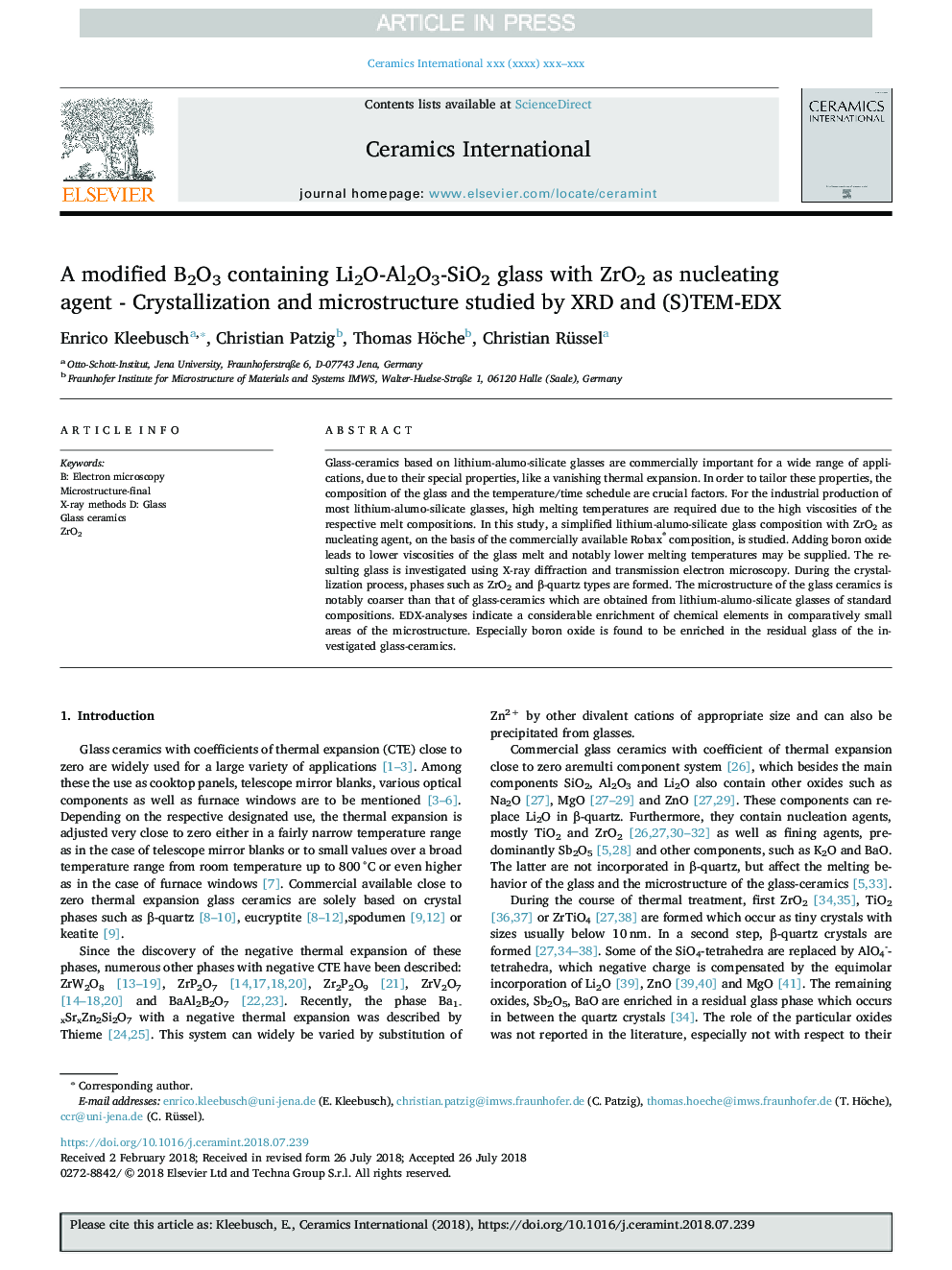| Article ID | Journal | Published Year | Pages | File Type |
|---|---|---|---|---|
| 10155458 | Ceramics International | 2018 | 7 Pages |
Abstract
Glass-ceramics based on lithium-alumo-silicate glasses are commercially important for a wide range of applications, due to their special properties, like a vanishing thermal expansion. In order to tailor these properties, the composition of the glass and the temperature/time schedule are crucial factors. For the industrial production of most lithium-alumo-silicate glasses, high melting temperatures are required due to the high viscosities of the respective melt compositions. In this study, a simplified lithium-alumo-silicate glass composition with ZrO2 as nucleating agent, on the basis of the commercially available Robax® composition, is studied. Adding boron oxide leads to lower viscosities of the glass melt and notably lower melting temperatures may be supplied. The resulting glass is investigated using X-ray diffraction and transmission electron microscopy. During the crystallization process, phases such as ZrO2 and β-quartz types are formed. The microstructure of the glass ceramics is notably coarser than that of glass-ceramics which are obtained from lithium-alumo-silicate glasses of standard compositions. EDX-analyses indicate a considerable enrichment of chemical elements in comparatively small areas of the microstructure. Especially boron oxide is found to be enriched in the residual glass of the investigated glass-ceramics.
Related Topics
Physical Sciences and Engineering
Materials Science
Ceramics and Composites
Authors
Enrico Kleebusch, Christian Patzig, Thomas Höche, Christian Rüssel,
